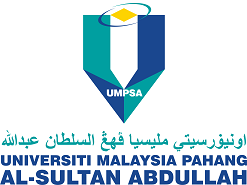The Performance of Pistia Stratiotes and Eichornia Crassipes for the Heavy Metal Removal during Backwash Water from WASRA System
DOI:
https://doi.org/10.15282/construction.v4i2.10680Keywords:
Eichhornia crassipes, Pistia stratiotes, Heavy Metal, FESEM/EDX, PhytoremediationAbstract
This study was conducted to determine the ability of Phytoremediation technology in treating groundwater contaminated with high heavy metal content of waste water, which is known as backwash water, using WASRA. Two types of aquatic plants have been used as agents for the treatment of wastewater; water hyacinth (Eichhornia crassipes) and water lettuce (Pistia stratiotes). To absorb heavy metals from the wastewater, two tanks were used for placing the plants. All analyses on wastewater are based on the Standard Procedures issued by American Public Health Association (APHA, 2017). The study of plant morphology is also conducted, where the study uses FESEM/EDX methods to determine the type of heavy metals found in these plant parts. These plants were divided into three parts which are leaves, stems, and roots. Based on experiments, different species of plants have the ability to remove metals at different levels of effectiveness. Thus, the two species, used as agents of phytoremediation are successful in removing heavy metals, with a removal rate of 50.79% to 88.49%. Pistia stratiotes precedes absorption rates of various heavy metals in high rates in the root part. In conclusion, phytoremediation technology has a very high potential in removing pollutants from water.
Downloads
References
U.S. Geological Survey (USGS). What is Groundwater? 2021. Retrieved from https://groundwater.org/what-is-groundwater/.
S. Singh, "Phytoremediation: A sustainable alternative for environmental challenges,” International Journal of Green and Herbal Chemistry, vol. 1, pp. 133–139, 2012.
Tchobanoglous, G., & Burton, F. L. (1991). Wastewater Engineering: Treatment, Disposal and Reuse. McGraw-Hill, McGraw-Hill Series in Water Resources and Environmental Engineering, New York, USA, 1991.
M. Darshan, M. Rizwana, and D. Nilesh, “Phytoremediation of textile waste water using potential wetland plant: Eco sustainable approach,” International journal of interdisciplinary and Multidisciplinary Studies, vol. 4, no. 1, pp. 130-138, 2014.
B.D. Tripathi and S.C. Shukla, “Biological treatment of wastewater by selected aquatic plants,” Environmental Pollution, vol. 69, no. 1, pp. 69-78, 1991.
V.K. Mishra, and B.D. Tripathi, “Concurrent removal and accumulation of heavy metals by three aquatic macrophytes,” Bioresource Technology, vol. 99, no. 15, pp. 7091-7097, 2008.
S. Bunluesin, M. Kruatrachue, P. Pokethitiyook, G.R. Lanza, E.S. Upatham, and V. Soonthornsarathool, “Plant screening and comparison of Ceratophyllum demersum and Hydrilla verticillata for cadmium accumulation,” Bulletin of Environmental Contamination & Toxicology, vol. 73, no. 3, pp. 591-598, 2004.
A.S. El-Gendy, N. Biswas, and J.K. Bewtra, “A floating aquatic system employing water hyacinth for municipal landfill leachate treatment: Effect of leachate characteristics on the plant growth,” Journal of Environmental Engineering and Science, vol. 4, no. 4, pp. 227-240, 2005.
U. Majeed, I. Ahmad, M. Hassan, and A. Mohammad, “Phytoremedial potential of aquatic plants for heavy metals contaminated industrial effluent,” European Academic Research, vol. 2, pp. 7038-7968, 2014.
T. Ajayi, and A. Ogunbayo, “Achieving environmental sustainability in wastewater treatment by phytoremediation with water hyacinth (eichhornia crassipes),” Journal of Sustainable Development, vol. 5, no. 7, p. 80, 2012.
C. Keith, S.V. Borazjani, H. Diehl, Y. Su, and B.S. Baldwin, “Removal of copper, chromium, and arsenic by water hyacinths,” In 36th Annual Mississippi Water Resources Conference, Mississippi State University, pp. 15-19, 2006.
Fathunnisa and Indah Rachmatiah, “Content of heavy metals in the water and water hyacinth (eichhornia crassipes) in water bodies receiving wastewater from textile industry, The Third Joint Seminar of Japan and Indonesia Environmental Sustainability and Disaster Prevention, Institut Teknologi Bandung, Indonesia – November 25th, 2015.
A.W. Aini Syuhaida, S.I. Sharifah Norkhadijah, S.M. Praveena and A. Suriyani, “The comparison of phytoremediation abilities of water mimosa and water hyacinth,” ARPN Journal of Science and Technology, vol. 4, no. 12, 2014.
J.B. Harborne, Metals and Micronutrients: Uptake and Utilisation by Plants. In D.A. Robb and W.S. Pierpoint (Eds.), Phytochemical Society of Europe Symposia Series No. 21. Academic Press, London. 341 pages, Phytochemistry, 1984.
Y.M. Nor, “The absorption of metal ions by Eichhornia crassipes,” Chemical Speciation & Bioavailability, vol. 2, no. 2, pp. 85-91, 1990.
R.S. Espinosa, “Lead uptake and growth responses in Pistia Stratiotes Linn,” Manila Journal of Science, vol. 4, no. 1, 2001.
D. Singh, A. Tiwari, and R. Gupta, “Phytoremediation of lead from wastewater using aquatic plants,” Journal of Sustainable Development, vol. 5, no. 7, pp. 80-86, 2012.
X. Xu, Y. Liu, X. Cao, and L. Zhao, “Comparison of the characteristics of activated carbons from lignin, cellulose, and wood,” Journal of Materials Chemistry A, vol. 1, no. 46, pp. 13803-13811, 2013.
W. Zhang, and C.H. Huang, “Phytoremediation of heavy metal-contaminated soils by a hybrid floating treatment wetland. Water, vol. 11, no, 4, p. 639, 2019.
Y. Zhou, Y., et al. “Application of phytoremediation to soil polluted by heavy metals: A review,” Environmental Science and Pollution Research, vol. 26, no. 19, pp. 19052-19060, 2019.
Downloads
Published
Issue
Section
License
Copyright (c) 2024 The Author(s)

This work is licensed under a Creative Commons Attribution-NonCommercial 4.0 International License.




